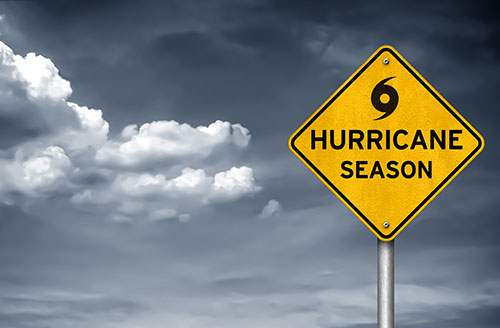In Florida, Hurricane season runs from June 1- November 30. The information outlined below is offered to help you prepare – especially those who are new to the area.
Know your Evacuation Zone
If you live in Westchase or the Northwest neighborhoods that receive the WOW, you live in a hurricane storm surge evacuation zone. As storm season ramps up, it is important to know your evacuation zone.
To find your zone using your street address and to check for evacuation orders when a hurricane is approaching, click here.
We also offer an annual Storm Surge Evacuation Map for Westchase and the Northwest neighborhoods, but it is always wise to double-check the link above for the latest evacuation advice. All of these zones can experience hurricane storm surge. As storm surge is, by far, the biggest killer in hurricanes, residents should comply with all county evacuation notices. The rule of thumb is “Hide from the wind; run from the water.”
Plan your Emergency Kit
Contents of disaster supply kits vary, depending on whether a family has children, pets, or members with disabilities. Remember, you only need to buy what your family needs for a short time frame. This is not the time to hoard and deprive others of necessary supplies. At a minimum, storm supplies should include:
- A minimum of one gallon of water per person, per day, for at least seven days
- Food that does not need refrigeration (canned goods, protein bars, peanut butter, etc.) that can feed your family (and pets) up to seven days
- A gas grill (with a backup tank) or propane camping stove with extra fuel along with a lighter or matches
- Plastic sheeting and blue tarps to cover potential roof/window damage
- A manual can opener and disposable utensils/plates
- A two-week supply of medicines; keep an updated list of family medicines and dosages, along with doctor and pharmacy phone numbers
- Personal hygiene items such as toothbrushes, toothpaste, deodorant, toilet paper, and, if appropriate, diapers and baby wipes
- In case of evacuation, keep in one, safe, portable, watertight container all important papers including your driver’s license, special medical information, insurance policies, property inventories, and your insurance agent’s name and phone number
- A battery-powered radio and flashlight
- A first-aid kit
- Cash and coins (if power is lost, ATMs and credit card machines will not function)
Florida Division of Emergency Management offers a printable checklist here.
Sign up for Emergency Alerts
Hillsborough County Emergency Alerts are designed to keep you informed about local emergencies, everyday events, and county news that’s important to you. When you sign up, you can choose which updates you’d like to receive and how you’d like to receive them: by voice, text or email.
Stay Informed
The following links offer useful information from trusted sources.
Hillsborough County Hurricane and Storm Preparedness
Hillsborough County’s storm resources include a list of items to have in preparation for a hurricane, options for dealing with your pet (Never leave a pet behind in an evacuation.), and their annual disaster planning guide dispels hurricane preparation myths and offers information on the nearest storm shelters.
Hurricane Evacuation Assessment Tool
The county’s Hurricane Evacuation Assessment Tool allows you to plug in your street address to determine your home’s specific evacuation zone and the nearest public storm shelters.
Florida Division of Emergency Management
The Florida Division of Emergency Management offers a helpful site to aid you in the development of a hurricane plan—and your supply list. Click on Plan and Prepare.
-
Register online (preferred registration method)
-
Call your home healthcare provider
-
Call the Hillsborough County Health Department at (813) 307-8063
Log onto Florida Health’s site and search for Hurricane and Hurricane Information Fact Sheets. You’ll find helpful links regarding building a storm kit and addressing children’s anxieties about storms.
The National Hurricane Center’s site posts expected storm trajectories and updates that are used by all local weather forecasters. It’s updated at 5 a.m., 11 a.m., 5 p.m. and 11 p.m. daily.

